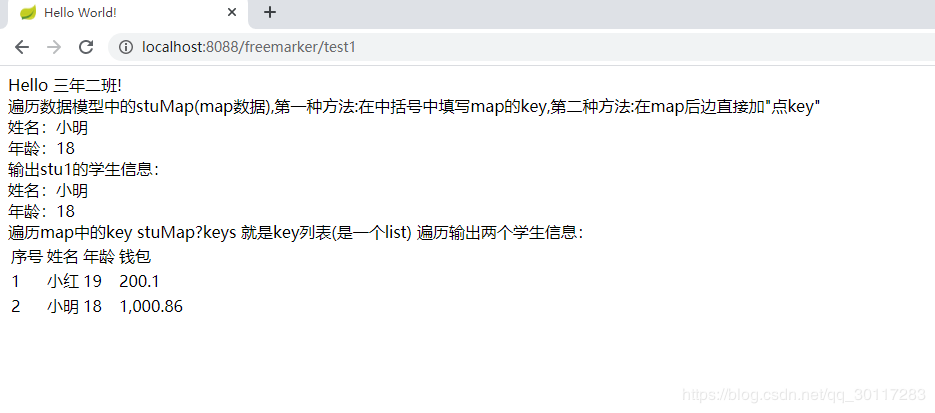Freemarker 遍历Map数据
数据模型:
@RequestMapping("/freemarker")
@Controller
public class FreemarkerController {
//测试1
@RequestMapping("/test1")
public String test1(Model model){
//向数据模型放数据
model.addAttribute("name","三年二班");
Student stu1 = new Student();
stu1.setName("小明");
stu1.setAge(18);
stu1.setMoney(1000.86f);
stu1.setBirthday(new Date());
Student stu2 = new Student();
stu2.setName("小红");
stu2.setMoney(200.1f);
stu2.setAge(19);
//准备map数据
HashMap stuMap = new HashMap();
stuMap.put("stu1",stu1);
stuMap.put("stu2",stu2);
//向数据模型放数据
model.addAttribute("stuMap",stuMap);
//返回模板文件名称
return "test1";
模板数据:
Hello World!
Hello ${name}!
遍历数据模型中的stuMap(map数据),第一种方法:在中括号中填写map的key,第二种方法:在map后边直接加"点key"
姓名:${stuMap['stu1'].name}
年龄:${stuMap['stu1'].age}
输出stu1的学生信息:
姓名:${stuMap.stu1.name}
年龄:${stuMap.stu1.age}
遍历map中的key stuMap?keys 就是key列表(是一个list)
遍历输出两个学生信息:
序号
姓名
年龄
钱包
${k_index + 1}
${stuMap[k].name}
${stuMap[k].age}
${stuMap[k].money}
展示效果:

作者:糖炒栗籽